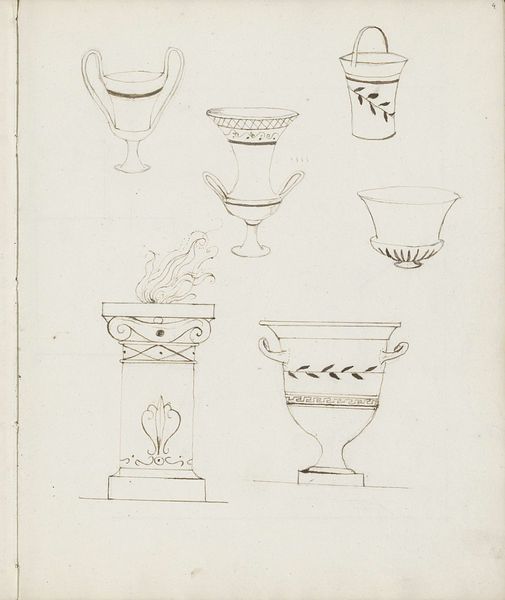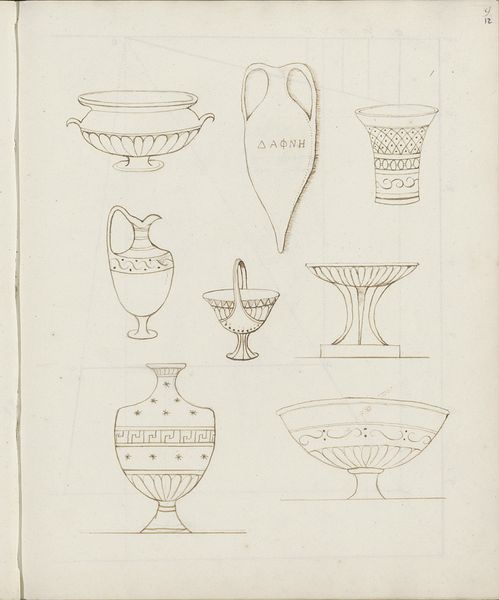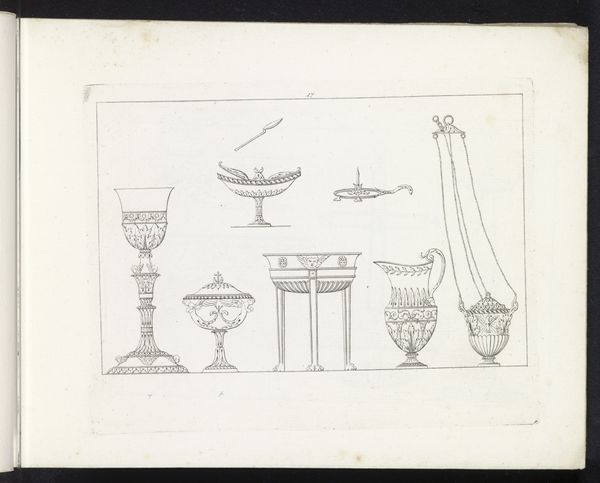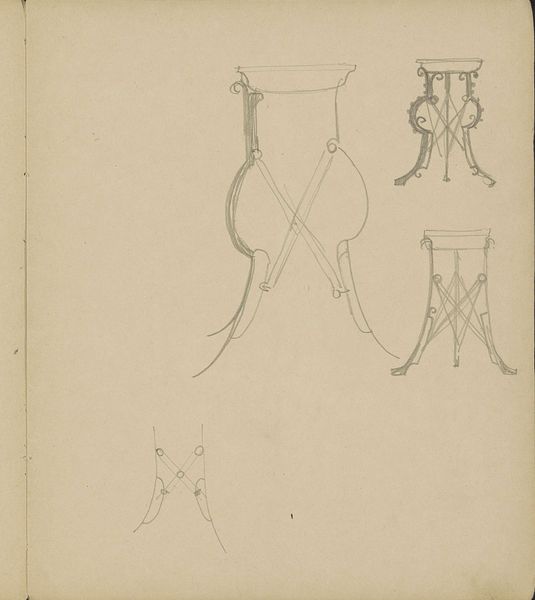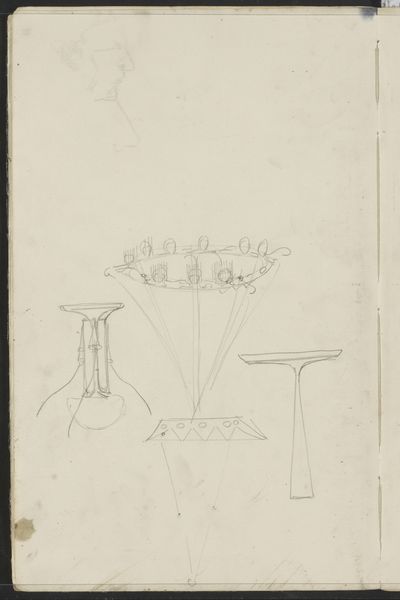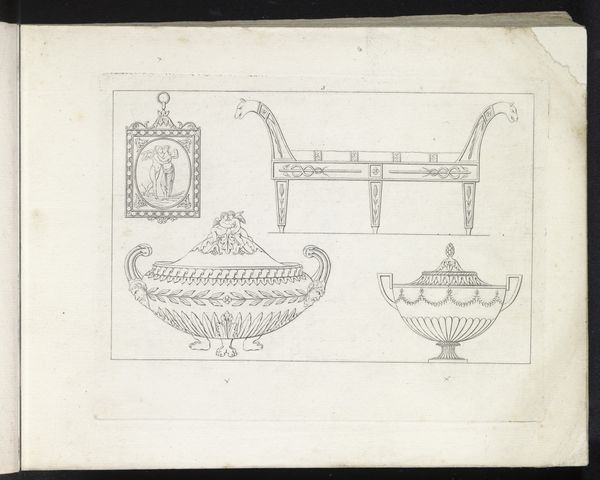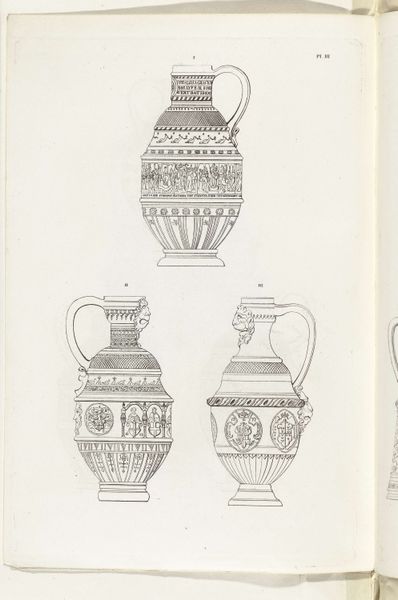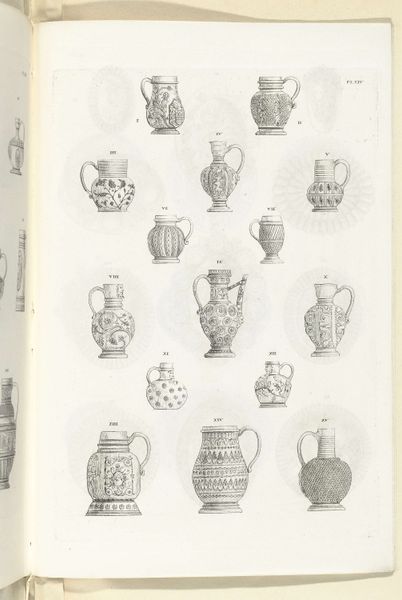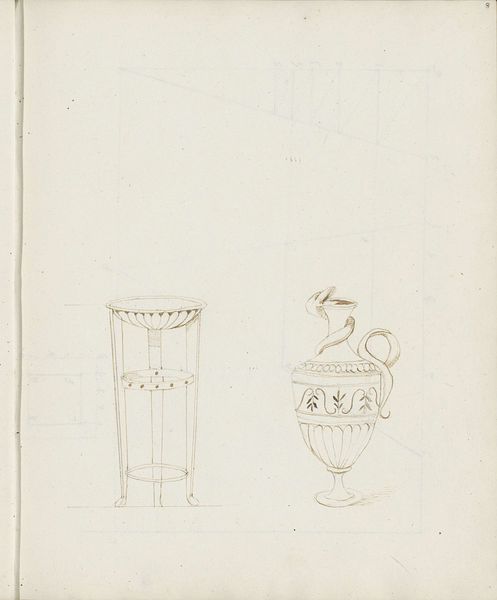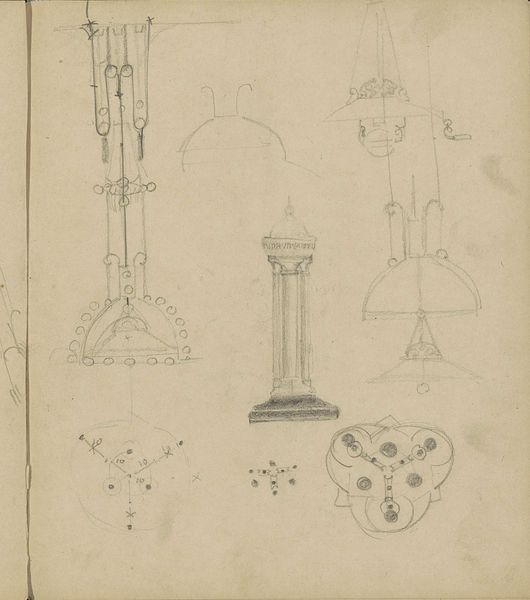
drawing, paper, pencil
#
drawing
#
greek-and-roman-art
#
classical-realism
#
paper
#
geometric
#
ancient-mediterranean
#
pencil
Copyright: Rijks Museum: Open Domain
Curator: Okay, let's dive into this delightful sheet of drawings titled "Griekse vazen," created by Catharina Kemper in 1813. It's rendered in pencil on paper. What strikes you first about it? Editor: Well, it's remarkably understated. The muted tones of the pencil drawings and paper evoke a feeling of antiquity, like these objects have survived epochs and we’re viewing the past through a hazy veil. Curator: Absolutely! Kemper captured something of the Neo-Classical fascination with antiquity, focusing intently on form. We see a variety of vase shapes, rendered with precise, clean lines. Note the repeating geometric patterns, the meanders, and the stylized plant motifs – common elements in Greek pottery. Editor: It's an interesting study in geometry, how the circles and ellipses intersect and repeat to define each object. Notice too how each vessel contains these self-similar elements; a vase or a bowl can sit on top of a vase! There's even a delightful little basket form at the top that echoes some of those curves. But what was Kemper thinking? Was this just a casual sketch, a visual notebook of styles? Curator: Given the date, 1813, I would assume Kemper was part of a movement where artists diligently copied classical forms to learn the principles of beauty. These weren't merely decorative arts; they were seen as embodiments of ideal proportions and harmony. I picture Kemper meticulously copying these designs, absorbing the ethos of classical art into her own artistic vocabulary. Maybe dreaming about a time long past. Editor: So, not just vases then. Each carefully rendered line, a testament to that period's fascination with antiquity. The emptiness adds a certain pensive air, a space to let the imagination wander through the remnants of a bygone civilization. Thanks, Catharina! Curator: A beautiful reflection of that Neoclassical dream of beauty in simple form. A fascinating piece for pondering about what inspires us to make art from art!
Comments
No comments
Be the first to comment and join the conversation on the ultimate creative platform.
